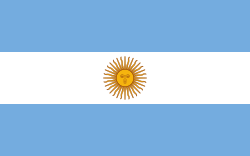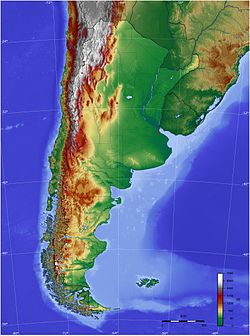

The following outline is provided as an overview of, and introduction to Argentina:
Contents
- General reference
- Geography of Argentina
- Environment of Argentina
- Regions of Argentina
- Demography of Argentina
- Government and politics of Argentina
- Branches of the government of Argentina
- Foreign relations of Argentina
- Law and order in Argentina
- Military of Argentina
- History of Argentina
- History of Argentina, by period
- History of Argentina, by region
- History of Argentina, by subject
- Culture of Argentina
- Art in Argentina
- Sports in Argentina
- Economy and infrastructure of Argentina
- Education in Argentina
- See also
- References
- External links
Argentina , officially the Argentine Republic, is a country in the southern half of South America . It covers an area of 2,780,085 km2 (1,073,397 sq mi), making it the second-largest country in South America after Brazil , the fourth-largest country in the Americas , and the eighth-largest country in the world. Argentina shares the bulk of the Southern Cone with Chile to the west, and is also bordered by Bolivia and Paraguay to the north, Brazil to the northeast, Uruguay and the South Atlantic Ocean to the east, and the Drake Passage to the south. Argentina is a federal state subdivided into twenty-three provinces , and one autonomous city , which is the federal capital and largest city of the nation, Buenos Aires . The provinces and the capital have their own constitutions, but exist under a federal system . Argentina claims sovereignty over the Falkland Islands , South Georgia and the South Sandwich Islands , the Southern Patagonian Ice Field , and a part of Antarctica .









